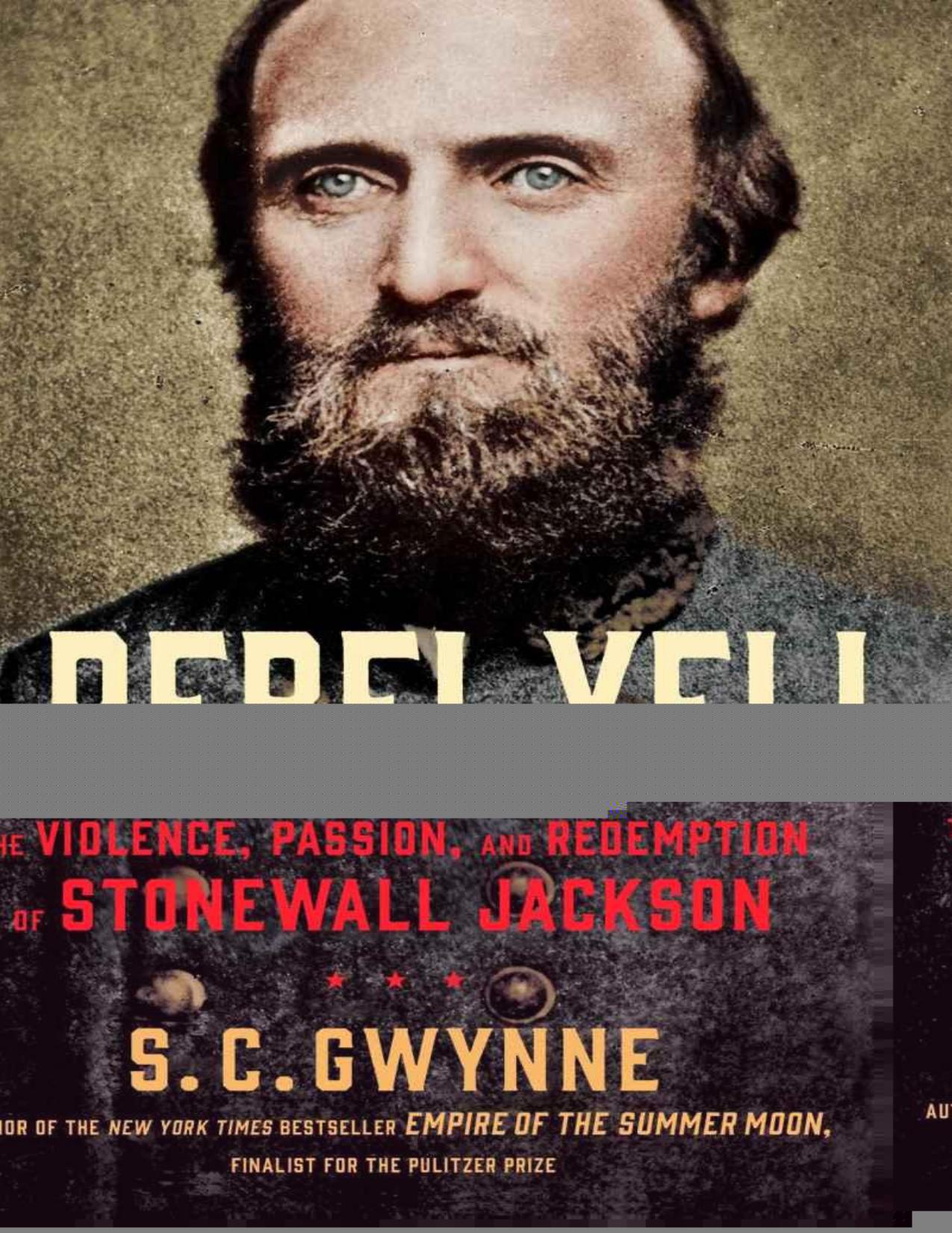Rebel Yell: The Violence, Passion, and Redemption of Stonewall Jackson by S. C. Gwynne

Author:S. C. Gwynne [Gwynne, S. C.]
Language: eng
Format: epub, azw3, mobi, pdf
Tags: Historical, Retail, Nonfiction, Biography & Autobiograpy
ISBN: 9781451673289
Publisher: Scribner
Published: 2014-09-29T04:00:00+00:00
In the late spring of 1862, this pier on the Pamunkey had become the lifeline of McClellan’s epic move against Richmond. In the river were boats of every sort, steam-powered and sail-powered and man-powered, stacked and gammed in rows that spread out into the lazy current and that were tethered ultimately to a succession of floating wharves where goods were unloaded. There were floating hospitals, too, sutlers’ stores selling everything from toothbrushes to potted lobster, roads jammed with wagons, quartermaster officers, sailors, African-American laborers, and other contrabands, mules, and horses.5 Here, too, was the terminus of the telegraph wire from Washington, strung along a circuitous, two-hundred-mile path from the War Department to Wilmington, down the Eastern Shore of Maryland, and up the York-James Peninsula. With its electrical current, electromagnets, and pulses of Morse code, it was one of the technological wonders of the age. Through it ran all of Lincoln’s chiding and coaxing, as well as McClellan’s dilatory, self-protective replies. From White House Landing the supplies were loaded onto train cars on the Richmond and York River Railroad and hauled westward to the Union camps in front of the Confederate capital.
Thus everything the Union army needed to survive—all that tonnage produced by McClellan’s vast logistical machine and transported from points hundreds of miles away—ultimately ran down a single, vulnerable railroad track. To threaten it was to threaten the army itself. Lee understood this. As he considered the scene in front of Richmond, he saw something else, too. The Chickahominy River, which ran parallel to the James and roughly bisected the peninsula, was swollen and unfordable: the bogs and marshes of its timbered bottomlands were up to a mile wide in places, making it impossible for cavalry or artillery to cross. At high water—which there was plenty of that spring—it was too swampy even for light infantry.6 Crossing was possible only by bridge, and there were only half a dozen of them spread along fifteen river miles in front of Richmond; some of them were washed out.
To protect the railroad line on both sides of the Chickahominy, McClellan had been forced to split his army. Jeb Stuart’s swashbuckling ride had shown Lee precisely how he had done it. McClellan had deployed eighty thousand men in front of the city, south of the river. But north of the river, on his right flank, he had placed only a single army corps of thirty thousand men under General Fitz John Porter, an army lifer and McClellan crony who had graduated a year ahead of Jackson at West Point and had later been a cavalry and artillery instructor there.7 (The rest of the Union right was camped on the south side of the river.) Because of the difficulty of moving an army across the Chickahominy, Porter could not be easily or quickly reinforced. In this Lee saw a compounding of Union weaknesses. He saw opportunity. A successful attack north of the Chickahominy against the numerically inferior Porter would in turn threaten the Union’s railroad
Download
Rebel Yell: The Violence, Passion, and Redemption of Stonewall Jackson by S. C. Gwynne.azw3
Rebel Yell: The Violence, Passion, and Redemption of Stonewall Jackson by S. C. Gwynne.mobi
Rebel Yell: The Violence, Passion, and Redemption of Stonewall Jackson by S. C. Gwynne.pdf
This site does not store any files on its server. We only index and link to content provided by other sites. Please contact the content providers to delete copyright contents if any and email us, we'll remove relevant links or contents immediately.
| Afghan & Iraq Wars | American Civil War |
| American Revolution | Vietnam War |
| World War I | World War II |
Waking Up in Heaven: A True Story of Brokenness, Heaven, and Life Again by McVea Crystal & Tresniowski Alex(36999)
Empire of the Sikhs by Patwant Singh(22163)
We're Going to Need More Wine by Gabrielle Union(18066)
Hans Sturm: A Soldier's Odyssey on the Eastern Front by Gordon Williamson(16575)
Leonardo da Vinci by Walter Isaacson(11896)
The Radium Girls by Kate Moore(10902)
Educated by Tara Westover(7055)
Tools of Titans by Timothy Ferriss(6936)
How to Be a Bawse: A Guide to Conquering Life by Lilly Singh(6686)
The Last Black Unicorn by Tiffany Haddish(5065)
Permanent Record by Edward Snowden(4986)
The Rise and Fall of Senator Joe McCarthy by James Cross Giblin(4840)
Promise Me, Dad by Joe Biden(4440)
The Wind in My Hair by Masih Alinejad(4420)
The Crown by Robert Lacey(4099)
A Higher Loyalty: Truth, Lies, and Leadership by James Comey(4025)
The Iron Duke by The Iron Duke(3636)
Joan of Arc by Mary Gordon(3253)
How to be Champion: My Autobiography by Sarah Millican(3181)
